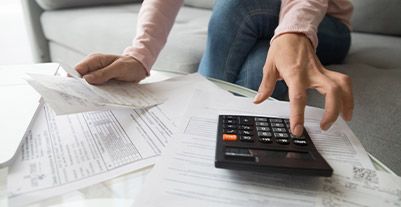What is the home loan principal amount?
The home loan principal amount is the amount of money initially borrowed from the lender, and as the loan is repaid, it can also refer to the amount of money still owed. If you avail a home loan of Rs. 50 lakhs, the principal is Rs. 50 lakhs. If you pay off Rs. 10 lakhs, the principal balance will be Rs. 40 lakh.
Conversely, interest is the amount of money the lender charges on top of the principal amount, and is calculated based on the home loan interest rate and the amount of the principal outstanding.
What is the principal amount?
The principal amount in a home loan refers to the initial amount borrowed by the borrower from the lender to finance the purchase of a home or property. It is the original loan amount that the borrower agrees to repay over the tenure of the loan. In a home loan, the loan amount is typically used to cover the cost of the property, and the borrower agrees to make regular payments, known as equated monthly instalments (EMIs), to repay both the principal and the interest charged by the lender.
Over the course of the loan repayment, the proportion of the EMI dedicated to the principal amount and the interest amount changes. In the early years of the loan, a larger portion of the EMI goes toward paying off the interest, while in the later years, a larger portion is applied to the principal.
Conversely, interest is the amount of money the lender charges on top of the principal amount, and is calculated based on the home loan interest rate and the amount of the principal outstanding.
Principal Amount and Interest
Each EMI can be broken up into interest and principal components, which changes as you repay the loan. You can use a home loan calculator to compare your principal and interest amount. Lenders create an amortization schedule, which shows the amount going towards interest and principal repayment each month. In this schedule, the amount going towards paying off the principal gets progressively bigger every year at a faster rate.
Principal amount amortisation
Principal amount amortisation refers to the process of gradually paying off the principal balance of a loan or debt over a specified period of time through regular payments. This is typically done in installment loans such as mortgages, car loans, or personal loans.
Here is the amortisation table for a loan amount of Rs. 1,00,000 with a tenure of 10 years and an interest rate of 8.50%:
Payment Number |
Beginning Balance (Rs.) |
Interest (Rs.) |
Principal (Rs.) |
Ending Balance (Rs.) |
1 |
1,00,000 |
8,500 |
1,505 |
98,495 |
2 |
98,495 |
8,397 |
1,608 |
96,886 |
3 |
96,886 |
8,254 |
1,752 |
95,135 |
4 |
95,135 |
8,087 |
1,919 |
93,216 |
5 |
93,216 |
7,929 |
2,076 |
91,139 |
6 |
91,139 |
7,767 |
2,239 |
88,900 |
7 |
88,900 |
7,566 |
2,440 |
86,460 |
8 |
86,460 |
7,368 |
2,638 |
83,822 |
9 |
83,822 |
7,115 |
2,892 |
80,930 |
10 |
80,930 |
6,780 |
3,227 |
77,703 |
Please note that the values are rounded for simplicity. This table shows the breakdown of each payment, including the interest and principal components, and how the outstanding balance decreases with each instalment over the 10-year term.
Also read: How to calculate home loan EMI?
Frequently asked questions
As you might already know, the original amount of money that you borrow from a lender is called the Principal amount. This amount is regardless of the interest and tenor. When you borrow a loan from a lender, you borrow the principal amount while you repay the same with an additional amount that depends on the loan tenor and the rate of interest. To calculate the principal amount on loan availed of, you can use the principal amount formula given below:
Principal payment = Monthly payment – Interest payment
Principal balance = Current loan balance – Principal payment
The sanction amount and the principal amount are not necessarily the same in a home loan. The sanction amount is the maximum loan amount that a bank or lender is willing to approve based on the borrower's eligibility and creditworthiness. Meanwhile, the principal amount is the amount that the borrower actually borrows from the lender.
It is essential to note that borrowing the full sanctioned amount as the loan amount is not mandatory. The borrower can choose to borrow a lower amount as per their requirement and their ability to repay the loan.
For instance, if the bank has sanctioned a home loan of Rs. 1 crore to a borrower, the borrower may choose to only avail a loan of Rs. 80 lakhs for the purchase of the property. In this case, the principal amount of the loan would be Rs. 80 lakhs, and not Rs. 1 crore, which is the sanctioned amount.
Therefore, it is vital for borrowers to plan their finances and choose the loan amount carefully, keeping in mind their repayment capacity and other financial goals. It is also important to note that the principal amount will attract interest, and the borrower will have to repay both the principal and the interest through EMIs over the loan tenure.
Principal Amount: The principal amount refers to the original sum of money borrowed from the lender to purchase a property. It represents the actual loan amount that the borrower needs to repay over the loan tenure.
Total Amount: The total amount, also known as the total repayment amount or the loan amount with interest, is the sum of the principal amount and the interest charged by the lender over the loan tenure. It represents the total cost of borrowing, including both the borrowed amount and the interest paid to the lender.





